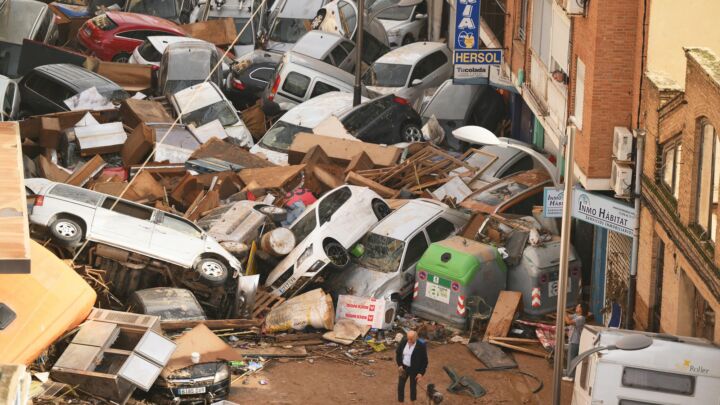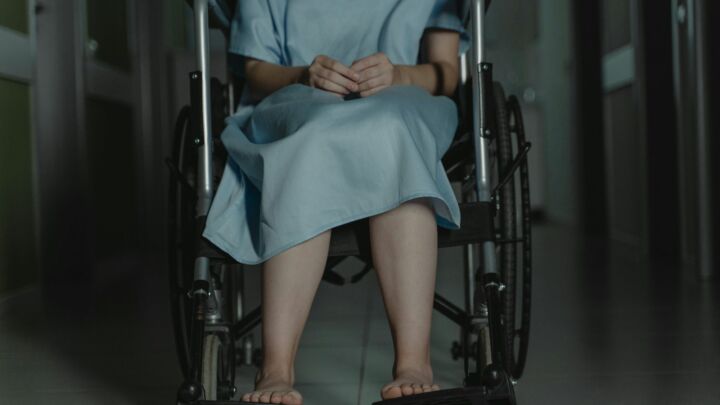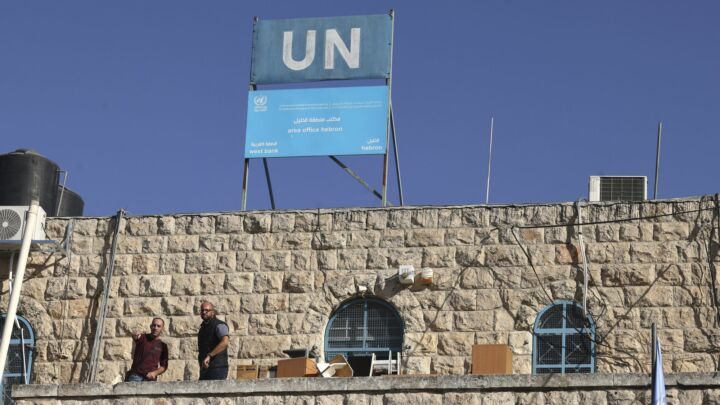Italy’s lockdown has been a recipe for disaster
The government’s haphazard response to Covid-19 has exacerbated the health crisis.

Want to read spiked ad-free? Become a spiked supporter.
More than 80,000 people in Italy are known to be infected with Covid-19 and 8,215 have died from it – nearly twice as many as any other country.
Yet despite this dreadful outcome, in a video conference of G7 foreign ministers on 25 March Italy’s foreign minister, Luigi Di Maio, boasted about Italy’s lockdown model. ‘In these weeks the other countries have recognised that Italy’s approach is the model to follow’, said Di Maio. His statement implies that the Italian government’s response to coronavirus was based on a rational model and guided by strategic thinking. But the government’s key actions prove this is a myth.
First, on 31 January, after two Chinese tourists in Italy tested positive for Covid-19, the government became the first Eurozone country to ban all direct flights between Italy and China. As there are high volumes of business between the countries, it was inevitable people would continue to travel anyway, only indirectly. There are more than 300,000 Chinese people working in Italy and some of them were likely to be travelling back to Italy after Chinese New Year on 25 January.
Many of the Chinese people living in Italy are from Wuhan – the original epicentre of the Covid-19 outbreak. They tend to be in Italy to work in the leather and textile industries in the northern Italian regions, especially in Lombardy, the region with most Covid-19 cases. From 23 January, people could no longer leave Wuhan for Italy as the city was locked down. Yet many may have travelled to Italy after Covid-19 emerged in Wuhan in late December.
There are even records of a significant and unusual increase in people hospitalised in Lombardy for flu and pneumonia between October and December last year. We do not know for certain if Covid-19 was spread from Wuhan to Lombardy directly, but this was the Italian region where the virus initially spread most rapidly. The government failed to quarantine and test people who were travelling between Italy and China in this period – nor did it test those who came indirectly from China after its travel ban.
The second significant decision by the Italian government was to lock down the Lombardy region and many parts of the Veneto region. But this move – and the way it was communicated – could have actually accelerated rather than restricted the spread of coronavirus in Italy. The lockdown was officially announced by prime minister Giuseppe Conte during a news conference, shortly after 2am on 8 March. But news of the lockdown had leaked to the press the previous evening. The lockdown was not initially well-enforced and there were widespread reports of people leaving lockdown areas to travel to other parts of Italy. As the lockdown included the closure of schools and universities in these areas, students and many people working in education headed to other parts of the country where their families are based.
The lockdown of these northern areas was extended to the whole country on 9 March. The government ordered all schools to be closed but most workplaces were free to remain open. The result was that vast numbers of children had to be cared for during the day by their grandparents while their parents worked. It was well-known at this time that children rarely show serious symptoms of Covid-19 when they are infected and that people over 70 are the age group most likely to die from the virus. In other words, the government’s closure of schools made it more likely that children who could have been infected with Covid-19 were spreading it to the elderly.
The targeted lockdown of places with high numbers of Covid-19 cases like Vo’ Euganeo in the Veneto region has proven effective in treating those infected and eventually lowering the number of new infections. But the national lockdown spread the state’s resources too thinly when it should have concentrated on those areas with the most infections.
This lack of local focus was made worse by the government’s decision last weekend to tighten the national lockdown by closing all workplaces and public spaces which it considered ‘non-essential’ for national production and supporting life. Moreover, this decision failed to take into account the possible long-term health, social and economic outcomes of locking down the whole population. The government has had to inject billions of euros into the economy to try to rebalance this.
The way the government introduced the latest phase of the lockdown made it abundantly clear that there is no strategic thinking going on. Early afternoon on Friday 20 March, Veneto regional governor Luca Zaia declared that people in the region had to stay within 200 metres of their houses unless travelling for work, health or necessities like buying food. The national health minister Roberto Speranza responded on Friday evening by signing a directive stating that people across the country had to stay ‘around’ their houses unless travelling for essential reasons. He also ordered all parks to close from Saturday.
On Saturday night, Conte announced the national lockdown of all non-essential workplaces after the Lombardy regional governor Attilio Fontana had demanded this for his region. This prompted governors of other regions to call on the government to ban employees who were no longer working from travelling from northern regions (with high levels of Covid-19 infections) to other regions. On Sunday, another lockdown decree was issued which stipulated that nobody could move from one council area to another unless they had a documented work or health reason.
Thus over a single weekend, the government’s definition of the lockdown kept on changing, mostly in response to demands from regional governors. On Wednesday this week, the government changed the definition of non-essential workplaces after trade-union leaders representing Lombardy and Lazio metalworkers threatened to strike.
One reason the government’s lockdown measures have been so haphazard is that the current government has no sense of democratic responsibility to the people – or any democratic mandate at all, for that matter. Instead, the government has been merely reactive – changing policy on the hoof, in response to calls for stronger restrictions by governors, unions and journalists.
The government and many unelected ministers, especially Conte, the unelected prime minister, lack any sense of democratic accountability. That is why Conte feels he can announce changes to the law in the middle of the night on Facebook, as he did on Saturday. It is also why most of the recent lockdowns have been by ministerial decrees which do not require approval by parliament.
After complaints about the lack of oversight, both houses of parliament were recalled on Wednesday and Thursday to debate and approve new lockdown measures. These include increasing the fines for violations of lockdown laws to a range of €400 to €3,000. Since 11 March, 2.6million people have been checked by police and 120,000 have been fined, while 1.2million shops have been checked and 2,600 shop owners fined. The latest lockdown law will also allow regional governors and mayors to decide on new lockdown measures which can endure for seven days before the government can approve or reject them.
This abdication of government responsibility hands state power to local state representatives, many of whom have been competing to show who is the strongest man. Some mayors have been acting like dictators, attacking people who leave their houses.
Instead of irrational and ever-more draconian state lockdowns, the government should allow local communities the freedom to help each other. In addition, there should be locally targeted isolation, protection and treatment of elderly and seriously ill people who are most vulnerable to Covid-19. According to a study by Italy’s national health authority, over 99 per cent of those who have died from Covid-19 in Italy suffered from previous medical conditions. The state needs urgently to focus on Covid-19 epicentres like Bergamo in Lombardy, where the virus is spreading through hospitals, ambulances and medical staff, and the necessary resources and equipment are in short supply.
We need to start treating Covid-19 as a medical emergency by targeting resources and measures more effectively. The lockdown model has caused chaos.
Dominic Standish is the author of Venice in Environmental Peril? Myth and Reality, and is a TV and radio commentator on Italian politics. Visit his website here and follow him on Twitter: @domstandish
Picture by: Getty

Spare a fiver, support spiked
Become a £5 per month donor today!
Celebrate 25 years of spiked!
A media ecosystem dominated by a handful of billionaire owners, bad actors spreading disinformation online and the rich and powerful trying to stop us publishing stories. But we have you on our side. help to fund our journalism and those who choose All-access digital enjoy exclusive extras:
- Unlimited articles in our app and ad-free reading on all devices
- Exclusive newsletter and far fewer asks for support
- Full access to the Guardian Feast app
If you can, please support us on a monthly basis and make a big impact in support of open, independent journalism. Thank you.







Comments
Want to join the conversation?
Only spiked supporters and patrons, who donate regularly to us, can comment on our articles.